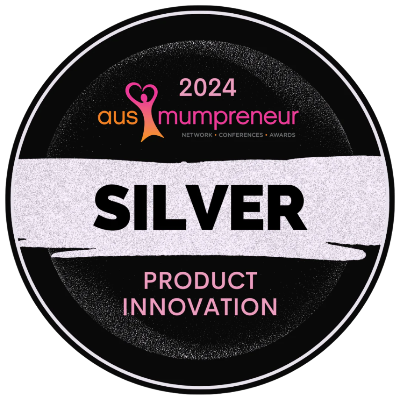Navigating tantrums and meltdowns is one of the biggest struggles for most parents, yet they are a universal and developmentally appropriate occurrence. When we see these tantrums as children being difficult, naughty, defiant and disobedient, it’s easy to become overwhelmed and default to controlling or coercive parenting. However, your child’s tantrums are not because they’re naughty and they aren’t a reflection on you as a parent - you’re an amazing parent (just in case no one told you recently). A child’s tantrum is simply a reflection of their internal state; children are either balanced (regulated) or out of balance (dysregulated) and it usually has absolutely nothing to do with the actual ‘thing’ that they’re having a tantrum about.
Since tantrums are developmentally appropriate, we will never be able to stop them from happening (and actually allowing and supporting the tantrum is an important part of the process). It’s important that children feel safe enough to show and release all of their feelings. However, there are a few things that will help to reduce the frequency, intensity, and duration of them. These 4 tips will help:
1. Keep routines and rhythms of the day consistent and predictable where possible
Predictable environments and consistent rhythms to the day help to reduce stress levels for children as it creates familiarity to the day. When children are able to predict what’s going to happen for the day, it reduces their cognitive load and helps them to feel safe.
It also supports their ability to understand what is expected of them and what they can expect from the day so that they don’t need to wonder what will be coming next. Try to keep to some kind of repetitive rhythm to the day as much as possible especially around wake, sleep and mealtimes. If your patterns or routines will be changing, let your child know ahead of time – this may not remove the tantrum but it may help them to adapt to the change ahead of time.
2. Offer choice where appropriate and possible
Young children do not like to be controlled and coerced (and who can blame them, to be honest) so offering them some choice when appropriate helps them to feel a sense of agency. When children are offered appropriate amounts of control and don’t feel like they are being coerced all of the time it becomes much easier for them to cooperate without having a tantrum. When offering a choice, make sure that there are a limited number of options (two is ideal) and that both outcomes are acceptable. If neither choice feels right for your child or they’re having a hard time choosing, then it is likely because they can’t make a choice in that moment, not that they won’t. If this is the case then take control and choose for them and accept the feelings and tears that may follow.
Some choices that can be helpful are:
- Choose which foot to put in shorts first
- Top or bottoms on first
- Walk to the bath or have a piggy back ride
- Hold hands in the car park or be carried
- Sit in the pram or hold hands to walk
- A blue bowl or red one
- Water or milk to drink
3. Try to avoid saying ‘no’
I imagine that you would feel pretty frustrated and powerless if you had your ideas and requests rejected as much as the average toddler. They hear ‘no’ a lot. That’s quite understandable as they often have to fit into the busy schedule of their adults and they don’t have the capacity for making big decisions yet. Instead of saying ‘no’, try to validate your child’s desires or wishes, even if you can’t make that happen just now. Or plan a time for when you may be able to meet that wish. For example, if your child wants a cookie a straight ‘no’ may be, "Yes, we can have a cookie after naptime."
4. Make sure transitions are transparent
Most toddlers are not so keen on surprises, particularly if they are having fun, are engaged in an activity or they’re moving on to something less exciting. Young children are also only able to focus on one thing at a time which can make shifting focus to the next activity really tricky for them.
A transition may be something like leaving the park, turning off the TV, stopping playtime, going in the bath, getting ready for dinner etc. Try to always give your child the heads up that the transition is coming up and try to give them a concrete time frame. Toddlers have very little understanding of time so five minutes is very arbitrary to them - and let’s be honest, it rarely turns out to be five minutes anyway. Try instead to help toddlers conceptualise time and connect with them in those final moments leading into the transition. For example, at the playground it could be, "Two more slides and then we’re going home", catch them at the bottom or join them on the slide. If watching TV it could be, “When this episode finishes it’s time to turn off the TV”, sit with them, and share in their delight over what they’re watching. If your transition is routine based, then you could offer something like, “After dinner we’re going straight to the bath,” and then help them to move on swiftly after dinner.
And lastly;
5. Focus on helping them feeling seen and connecting with them
There is no greater human need than the need to feel seen and valued; this starts in infancy and never goes away. With that, try to find small moments of the day where you can be undistracted and delight in your child. This can happen during mundane caregiving tasks or during child led play. For example, rather than rushing through a nappy change or sitting on a device whilst your child eats, find opportunity to create mutual enjoyment, laughter, eye contact and sensitive touch. These short but intense moments of connection can help to top up your child’s ‘connection cup’ throughout the day and reduce their need to command your attention in order to feel seen and heard.
*This is general advice and information only. If you have any concerns about the emotional or social development of your child, please see your medical practitioner for personal advice.
This blog was written for Rudie Nudie by Sarah Bolitho, a Child and Family Play Therapist and early years consultant. You can find Sarah on Instagram @securefoundations or you can find out more about Sarah and her work at www.securefoundations.com.au







